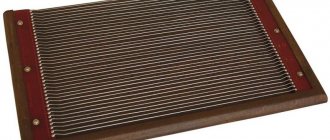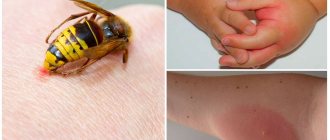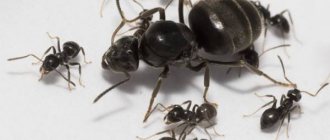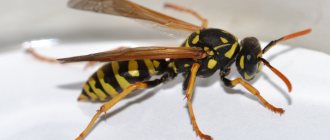Do dogs get tick vaccinations?
Pets are actually vaccinated. But in fact, vaccinations are not given “against ticks” or to prevent bites, but in order to reduce the risk of contracting dangerous infections. It is known that many ticks are carriers of pathogenic microorganisms and spread diseases:
- borreliosis;
- ehrlichiosis;
- encephalitis;
- piroplasmosis and others.
When bitten along with saliva
negative particles (bacteria, viruses) enter the animal’s body.
If a bloodsucker attacks a dog that has not been vaccinated, there is a high probability of complications developing (possibly disruption of the nervous system, death). Even if this does not happen, the disease will be quite severe. Recovery will not come soon.
After a timely injection of a drug developed for the purpose of vaccination, such risks are reduced, since the body is already “familiar” with negative particles. The immune system responds in the form of weak or moderate negative manifestations.
However, treatment is carried out quickly,
complications rarely develop.
If it is necessary to protect an animal from a tick bite, repellent and acaricidal agents in various forms are used for this: drops, emulsion, spray, collar. Any of the options helps prevent contact with parasites, while at the same time there is a detrimental effect on pests (if they come into contact with the poison, they soon die).
Drops on the dog's withers against ticks and other parasites
How it works
Vaccination will not protect against tick bites or the proliferation of fleas on the coat, but it will protect against the development of piroplasmosis, which dogs become infected with after insect bites.
During the injection, a weakened strain of the virus is injected in such an amount that the body of a healthy dog can definitely defeat it. This is how antibodies are produced that can quickly repel a threat when a real active virus enters the body.
It is worth considering that vaccination is not a panacea . It protects against only one of many possible diseases carried by parasites, has a limited duration of action and contraindications. Reviews by leading veterinarians report a fairly low success rate in developing immunity - 75-80% in a healthy dog without contraindications, but the product is still considered good.
How and when to vaccinate your dog against ticks
There are different types of vaccines. The most commonly used drugs are those that develop immunity to piroplasmosis (you can see the prefix “Piro” in the name). This disease is called canine encephalitis due to the similarity of symptoms. However, the pathogen in this case is not a virus, but protozoa (Babesia).
There are also vaccinations against borreliosis, but they are used less frequently. This is due to the fact that the disease itself often occurs without negative manifestations. After receiving the vaccine, the likelihood of developing symptoms of the disease is further reduced. Because of this, you can miss the development of the disease.
Choice of drug
should be done together with your doctor.
Considering that recently blood-sucking pests have been emerging from their shelters after hibernation earlier - in early March, it is recommended to inject a drug that protects against infections in winter. The best time for this procedure is 1-2 months before the first warm days in spring.
Typically, a dog is given a tick vaccine once a year. If the pet lives in regions with an increased risk of tick bites, vaccination is carried out twice in 12 months. At the same time, the rules for implementation are the same (30-60 days before the start of the pest activity season).
It's better to vaccinate your dog
shortly before the start of tick season.
Vaccination of a pet is carried out on the recommendation of a veterinarian
The principle of action of anti-flea injections
The active substance of the drug has a single effect on many parasites, such as fleas at any stage of development, ticks, helminths (worms), etc. etc.
From the pet's body (through a bite), the substance enters the parasite's body and causes paralysis of the nervous system. This occurs due to the activation of the release of the neurotransmitter gamma-aminobutyric acid by the nerve endings, and the connection between the cells of the nervous system is strengthened, which in turn leads to a weakening and blocking of the transmission of signals along the nerve fibers. Due to this, paralysis occurs in almost all organs and systems of the parasite’s body and, as a consequence, death.
A pregnant flea manages to poison the eggs in her body, and even if she manages to lay them, the offspring will not be viable. But the eggs and larvae that are born before the injection will be viable until the first meal.
The drug penetrates the body of a flea with a bite and makes it non-viable
The benefits of vaccinations
Pets carry parasites, ticks and other bloodsuckers. They can catch them when walking outside or coming into contact with infected cats or dogs. Their fur is the best environment for parasites to live and reproduce. Flea vaccinations or shots for cats and dogs are important for their health for several reasons.
A therapeutic vaccine helps the body produce antibodies and protect it from various side diseases in the future. After injections against fleas, the likelihood of developing anemia or worms is much less.
Active ingredients of injectables
Modern flea injections for cats contain substances that have an identical principle of action. The most popular of them are Ivermectin, Eprimek, Lufenuron. Along with the active components, injection ampoules may contain vitamin complexes. They speed up the pet’s recovery process and help quickly restore damaged tissue.
Ivermectin
The substance is included in not only injections. It is often found in sprays and gels. Vaccination against fleas in cats with a drug based on Ivermectin is done in a hospital setting by a qualified veterinarian. The medicine is effective against blood-sucking parasites, helminths and ear scabies. The substance is considered relatively gentle. Therefore, in parallel with the injection, the use of other anti-flea agents is allowed.
To achieve a stable effect, the injection is given twice. The interval between administration is 7-14 days. This period is enough for the next batch of parasites to emerge from the surviving clutches. Having made just one bite of the newly vaccinated animal, they receive their dose of neurotoxin and die. To prevent the appearance of fleas, one injection of the drug is enough.
Eprimek
Eprinomectin is a stronger substance than ivermectin. Flea products based on this component are administered once. The drug fights nematodes, sarcoptic mites, botfly larvae and ectoparasites. Eprimek blocks chlorine channels and nerve receptors of pests. As a result, the conduction of muscle and neuro impulses is disrupted, resulting in complete paralysis and death.
Eprimek begins to get rid of fleas after 1.5 - 2 hours, when the maximum concentration of the drug in the blood is observed. The substance must not be mixed with other medications. Strict adherence to dosage is mandatory. If there are no strong signs of infection, the veterinarian has the right to reduce it.
Lufenuron
Lufenuron-based flea products have a different algorithm for affecting parasites. Its purpose is to prevent the emergence of larvae from eggs. The insecticide blocks the synthesis of chitin. During the molting process, the larvae are not able to form a renewed cuticle, which is why they quickly die.
Adults are immune to lufenuron. The medicine is prescribed for minor parasitic infestations. In case of extensive infestation, you will additionally need other flea products (sprays, collars, shampoos).
Types of vaccines
There are three types of tick vaccinations for dogs, but they all work on the same principle. Each drug contains a small amount of pathogenic intracellular organisms. Name of tick vaccines:
- Nobivac Piro
- Eurican Piro
- Pirodog.
The dog’s immune system fights pathogenic microorganisms that have entered the blood from drugs, producing antibodies to them.
Nobivac Piro
Vaccination for dogs against ticks is produced in the Netherlands by Intervet. The drug contains grafted strains of Babesia A and Babesia rossi. Helps strengthen the body's immune response against the activity of intracellular parasites.
The Nobivak tick vaccination is given to adult animals and puppies over 5 months old. Cannot be used in combination with other vaccines within 2 weeks before and after immunization.
Eurikan Piro
Vaccination against tick-borne encephalitis for dogs in the form of a solution containing red blood cells infected with Babesia canis and treated with gamma rays. It is these microorganisms that cause canine piroplasmosis, also known as babesiosis.
The drug is produced by the French company Merial. It is harmless and, as a rule, does not cause severe side effects.
The development of immunity in animals to pathogens occurs 2 weeks after vaccination. The immune effect lasts for six months.
The dog is vaccinated against encephalitis twice, with an interval of 3-4 weeks.
In rare cases, after taking the drug, pets may experience lethargy and decreased appetite. Such symptoms resolve on their own and do not require therapeutic intervention.
If an allergic reaction occurs, treatment is carried out with antihistamines.
The vaccination is not used against tick bites and does not have a therapeutic effect.
Eurican is allowed to be used with vaccines against rabies and leptospirosis, but only if the injections are administered separately and in different areas of the body.
Pirodog
The vaccine is an analogue of Eurikan Piro, which is also produced by Merial. It has similar composition, indications and side effects.
Can be used without observing the recommended time intervals with vaccinations against leptospirosis and rabies from the same manufacturer.
Lufenuron
The flea vaccine for dogs, lufenuron, is a drug whose effect differs from the effect of other forms of drugs on parasites. The active component of the product is the substance of the same name. This drug has a weak effect on adult parasites and does not lead to their death.
The specificity of the action of lufenuron is as follows: the drug prevents the full formation of larvae, the typical chain of life of blood-sucking insects is interrupted naturally.
However, to completely eliminate fleas, it is recommended to combine this drug with other agents that lead to the death of insects, otherwise fleas will bother the animal even after the injection.
Is it possible to administer the vaccine at home?
Any of the anti-parasitic vaccines contains toxic substances, contact of which on the skin of the hands or mucous membranes of the eyes is important to avoid. It is recommended to wear sterile gloves before injection.
You cannot vaccinate a cat at home, even if its owner is fluent in the technique of performing intramuscular or intravenous injections on people. To avoid risks, the drug should be administered exclusively in a veterinary clinic. The solution is injected into any muscle on the animal’s body, but most often in the forearm.
In addition, the specialist will be able to correctly calculate the dosage for the animal in a particular case. The veterinarian will offer several types of flea vaccines and select the optimal remedy.
Most drugs are analogues of each other, since they have the same principle of action, but have different names or active ingredients.
Guarantee of protection
One of the most common questions asked by dog lovers is whether vaccination provides 100% protection against piroplasmosis.
Unfortunately, today there is no vaccine in the world that could guarantee complete protection against infection with these dangerous diseases.
But despite this, veterinarians still recommend using these preventive measures, since they are the most effective today.
Such an injection allows you to minimize the likelihood of developing severe consequences, which in this case is quite an important point.
Side effects
Like any other injection given to a dog, it can cause swelling in the injection area, there is nothing dangerous or terrible about it, such swelling goes away on its own.
Each organism tolerates the drug individually, and each person may have their own symptoms. Some dogs may experience a slight increase in temperature, which is also a normal symptom.
But an allergic reaction for a dog is dangerous, since the development of anaphylactic shock is observed, in which case veterinary care and mandatory treatment are mandatory.
How do flea injections work for cats?
Injections work completely differently than shampoos, sprays, drops or collars. It is no coincidence that they are resorted to last, since the active substance is injected directly into the cat’s blood. The injection is performed subcutaneously, intramuscularly, depending on the purpose of the drug.
The active substance enters the animal’s blood through a network of capillaries and is distributed throughout the body through the circulatory system. Thus, no matter where the parasite is, when it bites a cat, it is guaranteed to receive a dose of the poisonous agent. Once the “infected” blood enters the flea’s digestive tract, and along with it one of the medications, it leads to paralysis of the insect and then to death.
Since most drugs act in a complex manner on young and adult individuals, curing a cat from fleas is quick, painless and quite effective. To prevent re-infection of a cat, veterinarians recommend preventive treatment with sprays or shampoos, and special collars.
Whey Disadvantages
Tick vaccinations for dogs cause many side effects. For example, tick injections for dogs for tick-borne encephalitis can cause decreased appetite, lethargy, and a sharp rise in body temperature.
Tick injections cause allergies, so the dog may experience swelling at the site of injection of the serum.
Vaccination of pets against tick-borne encephalitis and piroplasmosis is a fairly new way to protect animals, which does not guarantee 100% protection and has risk factors.
Owners should not rely on vaccination alone. Along with vaccination, it is important to use additional protective measures: collars, drops, sprays, insecticidal and acaricidal preparations.
Advantages and disadvantages of this method
The advantages of this method are:
- ease of use;
- efficiency and speed;
- safety for cats;
- painlessness;
- effect not only on fleas, but also on many other parasites;
- duration of action.
- drug toxicity;
- Possibility of use only for adult, healthy individuals.
Important!
Flea injections should not be used on pregnant or lactating females!
Period of increased vulnerability
Most of all, owners whose dogs are often in the forest and plantings are most afraid of piroplasmosis. Over the past three years, the number of animals bitten by ticks has increased. It's not just hunting and service dogs that are at risk. A cute decorative dog walking with you in the park may also be attacked by an insidious insect. And it’s not a fact that you will immediately find a tick on the dog’s body. These inconspicuous insects often go unnoticed by the human eye. A guess about a pest attack may visit the owner when the dog begins to feel unwell.
It may be presumptuous to say that your dog does not need a vaccine against piroplasmosis. The vaccination procedure is not complicated. The specialist gives the puppy an injection at the withers. The veterinarian will explain to you what needs to be done during the period of increased vulnerability of the four-legged prankster. The dog needs antihistamines for three days after administration of the drug.
You should treat your pet especially carefully in the first few days after his “acquaintance” with the vaccine. Some animals may experience redness at the injection site. The development of swelling in the problem area is also possible. There is no need to panic over this. The swelling goes away on its own within two to three days.
While the dog’s immunity is going through the correction stage, you should protect your dog from the following situations:
- drafts;
- long walks on hot days;
- traveling to unfamiliar places;
- gastronomic experiments.
The weakness and loss of appetite that occurs in some puppies after vaccination goes away without medication. You should pay attention to what your dog eats. The animal's food must be complete and high in calories. You should not give your dog treats from the owner's table.
Side effects
The injection against piroplasmosis has a wide range of possible side effects and complications that arise when the rules for administering the vaccine are not followed or due to previously unidentified characteristics of the dog.
A common occurrence is swelling of the injection site and a slight increase in body temperature. They go away within a week and do not cause serious harm to the dogs.
Consequences of vaccination
You should worry if symptoms of the disease appear:
- Lethargy.
- Refusal of food.
- Change in gait.
In this case, you must immediately contact a veterinarian to find out and eliminate the causes of the incident.
Other pest control options
To understand why flea injections for indoor cats are most effective, it's worth taking a closer look at other methods and how they work.
You can fight fleas with the help of the following drugs and protective agents against parasites:
- flea collar;
- flea and tick drops;
- spray;
- pills;
- shampoos;
- powder.
They are less effective, but are suitable for complex use and for the prevention of fleas in cats and dogs.
Collar
This is one of the simplest and most commonly used insect repellents. It is easy to put it on the animal, the main thing is to observe the period of validity of the substance specified by the manufacturer.
The design can be very diverse. Each owner will be able to choose a collar to suit their taste.
During a walk during treatment, 2 collars are put on at once: a regular one and a therapeutic one. The drug begins to act on parasites 48 hours after the insecticidal components have completely spread through the coat. The action continues throughout the period of wearing the collar.
Drops
Drops are an easy and effective method for prevention or treatment. Applying them at home is easy. The drug begins to act immediately after contact with the skin. After 24 hours, its effect stops, so re-application will be required.
For the effect to be noticeable, the drops are used for 30 days. During treatment, animals are bathed less frequently. The cost of such a drug in different pharmacies varies, but it is quite affordable.
Spray
The action and application of the spray are similar to the use of drops.
But the impact comes faster, because the processing area is larger. The spray can be applied to the entire coat, even in hard-to-reach places. The medicine has a long duration of action, up to 14 days. Moreover, the parasites begin to die immediately.
The big advantage is that the active substance does not penetrate into the blood. But apply the medicine to the fur only with gloves and in a well-ventilated area or outside.
It is better to put a muzzle on the dog so that the animal cannot lick itself and does not swallow the medicine. The cost of the spray is higher than that of the drops, but the purchase will be worth it.
The spray has a long duration of action, up to 14 days
Pills
Anti-parasite tablets have not been used for very long, but have already become popular due to their effectiveness. They are based on the active substance. It is an insecticide registered as a pesticide in the United States. He handles the problem well. But some animals reject the drug and regurgitate the tablets.
Shampoo
Many pet owners prefer to use shampoo. It cleanses the hair well and heals at the same time. Application does not require special skills, the products are less toxic than sprays.
The advantage is that all wool is processed. But there is a drawback. Shampoo only paralyzes the parasites and after bathing you will have to comb the animal’s fur with a sparse comb. The effect of the shampoo lasts about a week, then the procedure is repeated.
Powder
Powder is rarely used, because it will have to be applied to the entire six and then combed out. The procedure takes a long time and requires several repetitions.
The danger of powder is that animals lick it off. This causes stomach upset. After the procedure, the coat becomes brittle, dry and dull.
Other remedies for fleas in cats
Not all cat owners want to give their pet injections, because it is unknown how the animal’s body may react to the drug. Of course, the instructions for the medications indicate that they do not cause side effects and have no contraindications, but some still have concerns about this.
In these cases, veterinarians suggest other means to eliminate parasites. Some of the popular ones include the following:
- sprays;
- pills;
- drops.
Sprays
Sprays are considered one of the most effective medications for eliminating parasites, including fleas in cats. They can be used against a large number of parasitic organisms. They can be used at home, but you should first consult with a veterinarian.
Attention! Some sprays may be toxic. When using them, it is worth protecting the animal’s eyes, nose, and mouth from penetration of the product when sprayed. Also not suitable for pregnant or lactating cats.
The most effective flea medications in spray form are the following:
- Leopard. An affordable and highly effective flea medicine. The positive effect occurs immediately after the first spray. When using, you should be careful; it contains permethrin, which can provoke an allergic reaction;
- Hearts. It is a low-toxic flea treatment that can be treated even on kittens as young as two months. When used, rapid death of parasites is observed;
- Frontline. The drug does not have any harmful effects on the health of cats. The composition contains fipronil, due to which the drug has a neuroparalytic effect on parasitic organisms. It can be used as part of preventive therapy for adult animals, as well as for kittens and pregnant cats.
Pills
Special tablets are often used to eliminate fleas. This method is considered simple and highly effective. The tablets are taken with food.
Note! Before using tablets on your pet, you should consult your veterinarian. Sometimes, after administration, some animals experience individual intolerance to the constituent components in the form of vomiting and indigestion.
Find out more about flea tablets for cats.
Drops
Drops are a good remedy for eliminating fleas in cats. Moreover, this form of the drug can be used both to eliminate parasitic organisms and as part of preventive therapy.
Effective products that are available in the form of drops include the following:
- Stronghold. The medicine is in high demand among owners of furry representatives of the cat family. The active substances have a destructive effect on adult insects, as well as their larvae;
- Dana. The drops contain the active substance diazinon. Shows high effectiveness against cat fleas. Toxic substances enter the insect’s body along with the blood and provoke its immediate death;
- Frontline. The drug has a lot of positive reviews among cat owners. When used, it almost immediately causes the death of all parasites. At the same time, it remains effective for a month.
Find out more about the indications and contraindications of flea drops for cats.
Preventing flea infestation
The best prevention is to avoid any contact between the cat and infected street animals, and periodically monitor the first signs (scratching and nervousness). It is better to contact a veterinarian for help in time to prevent a colony of fleas from multiplying on your pet, rather than having to deal with numerous generations of these parasites later.
Treating the pet's resting place (bedding or house) helps a lot: washing, spraying. One “accidentally” entering flea can cause a lot of trouble. After walking (with or without an animal), be sure to wash your hands with soap and shake out your clothes and shoes. Wet cleaning of an apartment or room with the addition of anti-flea drugs works well.
Finally, bathing the cat in a special shampoo and using a collar are quite effective. The latter is a strip of plastic impregnated with the drug. The smell has a depressing effect on fleas and helps prevent their reproduction in the early stages. Before putting on the collar, you should make sure that it is suitable (the mark on the label) and adjust the size to the cat’s parameters.
Sources
- https://misterklop.ru/klesshi/privivka-ot-kleshhej-dlya-sobak-kak-i-kogda-ee-delayut-otzyvy-veterinarov
- https://dogipediya.ru/veterinariya/preparaty/privivki-ot-kleshhej-dlya-sobak
- https://opklop.ru/blohi/sredstva-ot-bloh/ukoly-protiv-bloh-dlya-koshek-i-sobak-196/
- https://otravin.ru/blohi/ukoly-dlya-koshek-i-sobak.html
- https://parazitdoma.ru/blohi/privivka-ot-bloh-sobake
- https://combat-dez.ru/privivki-protiv-kleshei-dlia-sobak-opisanie-mehanizm-deistviia-vidy-vakcin-effektivnost/
- https://dezplan.ru/vopros/izbavlyaemsya-ot-bloh-na-raz-dva-obzor-i-preimushchestva-populyarnyh-privivok
- https://parazitdoma.ru/sovety/privivka-ot-ukusa-klescha-sobake
- https://adogslife.ru/diseasedogs/medication/privivka-ot-kleshhej-dlya-sobak-dostoinstva-i-nedostatki.html
[collapse]











